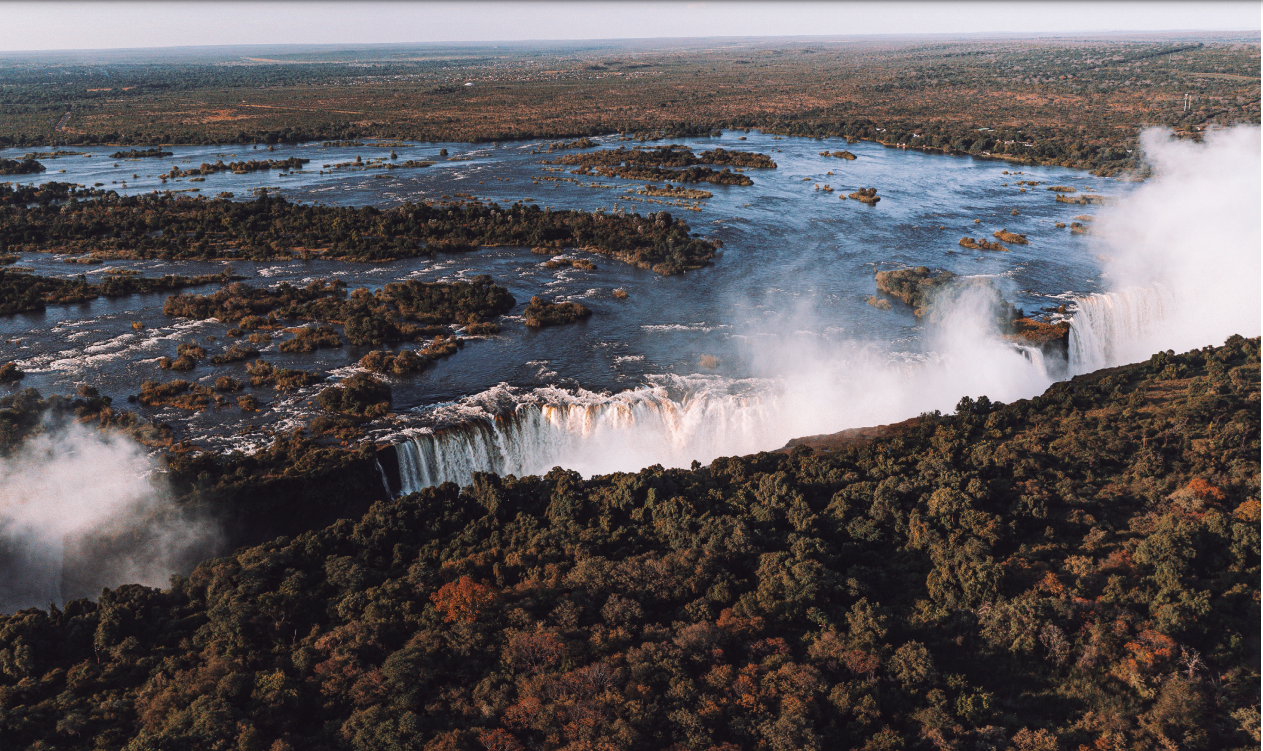Zambia
A Nation on The Rise

Falls aerial view / Photo by: Lucca Afonso
SHARE
«We are developing a nervous system of transportation which will ensure the health of our nation»
MINISTER OF TRANSPORT TAYALI
«Our 20-year strategy will generate new growth and green development while at the same time bringing Zambia to the Zambians ».
MINISTER OF TOURISM CHITOTELA
For decades, Zambia has been expected to share the fate of other land-locked countries, left without a direct link to international trade and to the corresponding influx of visitors, investors, and global trends and cultural dynamics. Yet contemporary Zambia is all about defeating expectations. With a land mass larger than Texas and bordering almost everycountry in the region (eight in total), Zambia is not only one of the largest countries in Africa but is also the link than binds the region together, a region that has seen staggering growth in local production, industrial development, and interregional trade. Indeed, things are moving in the South of Africa, and Zambia is its main artery. Accordingly, the government has set out an ambitious plan of financial, infrastructural, and touristic development designed to make perceived hindrances into clear advantages. Land-linked instead of land-locked, Zambia is now on the route to becoming the modern heart of Africa, the undisputed hub of regional trade relations.
It is a concerted effort of ministries, develop-ers, and local and international investors whose task is to piece together the future of Zambia as a whole. While the Ministry of Transport up-dates a 120-year-old rail network that will link Cape Town to Dar El Salam, the Ministry of Finance is on the brink of restructuring its debt relations with global institutions and modernize its business environment to attract eager international investors as participants in large-scale projects. “We are developing a nervous system of transportation which will ensure the health of our nation”, says Minister of Transport Tayali.

